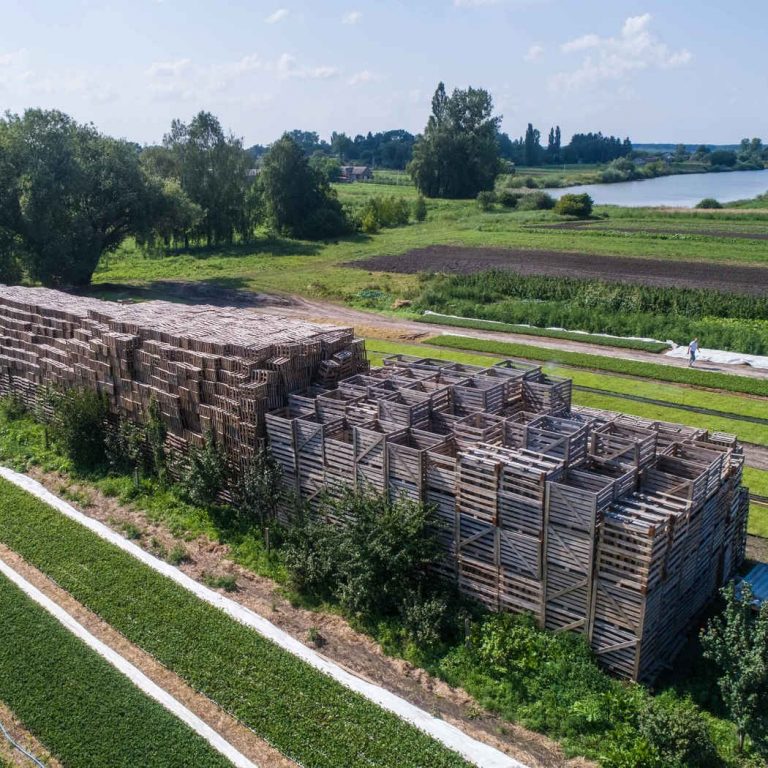Only 10 years ago people from Khorokhoryn village in the Volyn region were leaving en masse for Poland as migrant workers. But as soon as one of those workers – Vitaliy Karpovych – came home with the idea of growing Chinese leaf cabbage and strawberries, most of the other locals returned home as well. Today it’s hard to find anyone in the village who’d like to go abroad for a better life or complains about a lack of work opportunities. Their local know-how growing large quantities of strawberries and Chinese leaf has even spread beyond Ukraine’s borders.
The cluster farming agricultural model has become increasingly popular in Ukraine recently. Fellow villagers or residents of neighboring villages combine their efforts into a farm cluster and focus on growing specific crops. In a previous article we shared about Utkonosivka, a tomato growing cluster in South Bessarabia, and about cabbage farming in Velyki Kopani in Tavria. Khorokhoryn village, located 33km from Lutsk, is another great example of a successful cluster in Volyn.
First steps
The idea to grow strawberries and Chinese leaf began in 2007-2008 when people from Khorokhoryn went to Poland as migrant workers and observed the farming practices of polish farms. After gaining some knowledge and experience abroad, Vitaliy Karpovych together with a few fellow villagers decided to try doing that at home. Looking back at how his farming business started, Vitaliy says:
– The Polish guy I met was a great chap. He explained all the ins and outs and gave me the seedlings. And that’s how it all began. We came back home and planted the seedlings. And then we started to gradually increase the production, year by year.

One by one everyone else from Khorokhoryn joined in. Vitaliy and other former migrants started to share their ideas and seedlings with their fellow villagers. People got an opportunity to make their own living from this business, no matter how small it was:
— Our people are all hardworking and persistent, like all Ukrainians. Someone pioneered the idea and then the rest joined in. And now everyone keeps working.
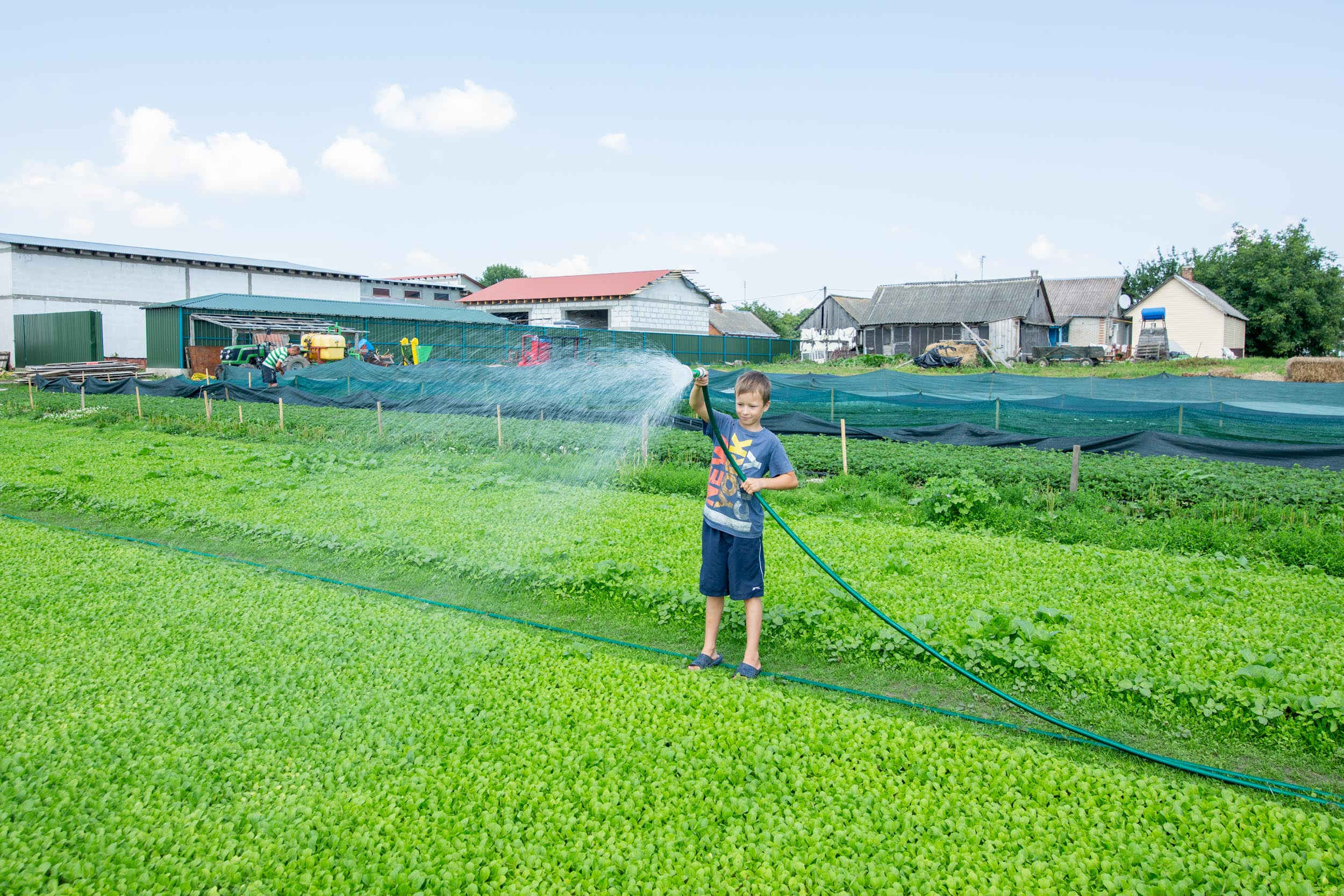
For many people, however, running their own farm was a real challenge. There had never been any collective farms in Khorokhoryn before, and the farmers also lacked the necessary equipment – they had to set everything up and buy all the necessary start-up equipment.
Ihor Fronchko – the owner of a small farm who moved to Khorokhoryn from Lutsk – faced similar challenges. When he started growing strawberries and Chinese leaf he had to rely on the support of his family and only had one tractor at his disposal. Ihor explains the simple reason for why he grows such an unusual crop combination:
– Why exactly strawberries and Chinese leaf? Because they do not interfere with each other. In June, for example, we harvest strawberries and plant the Chinese leaf. As soon as the strawberry season is over, Chinese leaf harvesting begins. And so it goes in August, September, October, and then we sell the cabbage all winter long. Then the strawberry starts again.

The emergence of a new farming business rejuvenated rural life and solved the unemployment problem for many of Khorokhoryn’s residents. The feeling of responsibility for their own harvest and its respective profits does not allow farmers to be idle. Ihor reassures that even heavy drinking in the village has become rare:
— The deal is: they can’t get drunk, ‘cause if they don’t do the covering (of the cabbage – ed.) – it will be a goner. And the annual earnings will evaporate in one day.
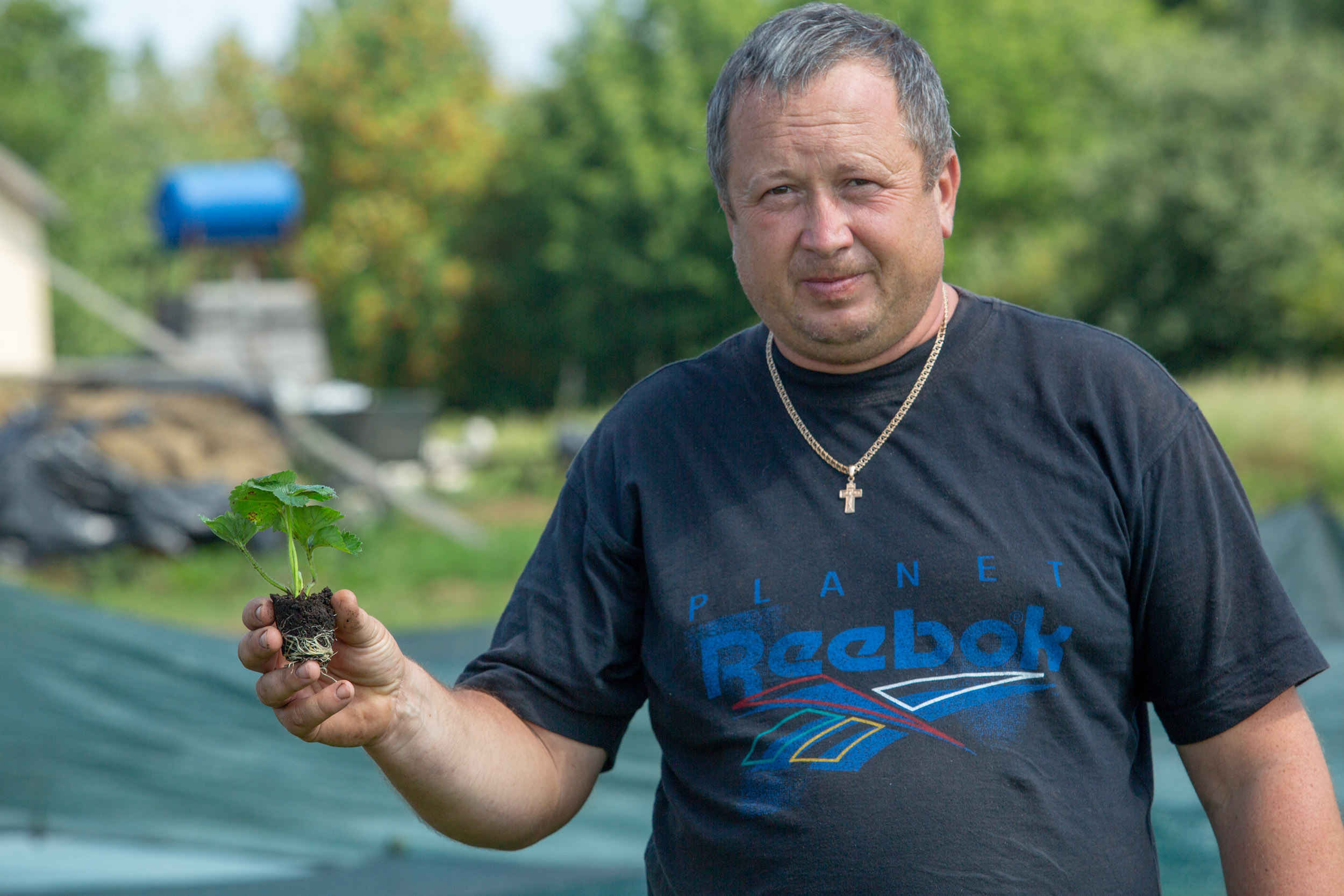
Hard work
Growing strawberries is not the easiest thing to do. To cover the crops and to protect seedlings from low temperatures, insects and other harmful factors, the farmers use straw instead of agricultural spunbond. To plant a hectare of strawberries one needs to have plenty of straw. Vitalii grows different varieties of strawberries: “Marmelada”, “Clarey”, “Alba”, and “Rumba”. The “Marmelada” is among the most popular, although there is a growing demand for new varieties too. Strawberries are quite capricious and demanding. Anatolii Melnychuk – the head of the village council – agrees:
— Special attention is required at the very beginning with soil preparation, because one can’t just plant strawberries anywhere. It takes half a year just to prepare the field’s soil for strawberry planting, either by planting a cover crop (a crop that “prepares” soil for future plants — ed.) or by letting it lie fallow.

Fallow land
A piece of ploughed and harrowed land that is left for a period without being sown in order to restore its fertility.
Khorokhoryn’s seedlings are no less popular than the berries themselves. Though many seedlings are imported from abroad and sold by private businesses, there are many farmers that prefer local small business owners like Vitalii.
Chinese leaf also has its nuances. There is always a high risk of losing the entire crop due to hot weather. Until 2016-2017 there was enough rain for the cabbages to grow. But in recent years it’s hard to do so without extra watering:
— Autumn comes – and there’s nothing to harvest, no cabbage, only flowers. There wasn’t enough rain. And you can’t simply water all that.

Unlike in Poland, Ukraine does not yet have a well functioning system for running strawberry-cabbage farms, and the revenues from the sales are modest. Ukrainian farmers have to invest heavily first, equip themselves with all the required machinery, with the coolers to store the cabbage, and have to find the workers. There are also difficulties because of the scarcity of land. A while ago the older generation readily leased their plots for 10-20 years, and these plots are still in the hands of the original lease holders. This means that even though the will, the free hands, and the seedlings are available, people can’t start farming — explains Anatolii:
— When the land had been on offer we were reluctant to take it, since we didn’t know back then if we could handle it all. But now people finally believe in themselves. And I hear a lot from people who would gladly extend their plots to cultivate more.

People from neighbouring villages are still going abroad for work, admits Vitalii. This means that the majority of landowners harvest crops on their own, as the pay they can offer workers is hardly encouraging to others:
— It’s quite hard to work with other people, and to get anyone on a permanent basis,.. you know how it’s like to work in a strawberry field. Today you have one person working and picking: it’s too hot, too cold, too rainy, too tiring for him/her. Tomorrow you have somebody else. People and their salaries is a challenging topic. The majority leave for Poland or some other country where they can earn more.
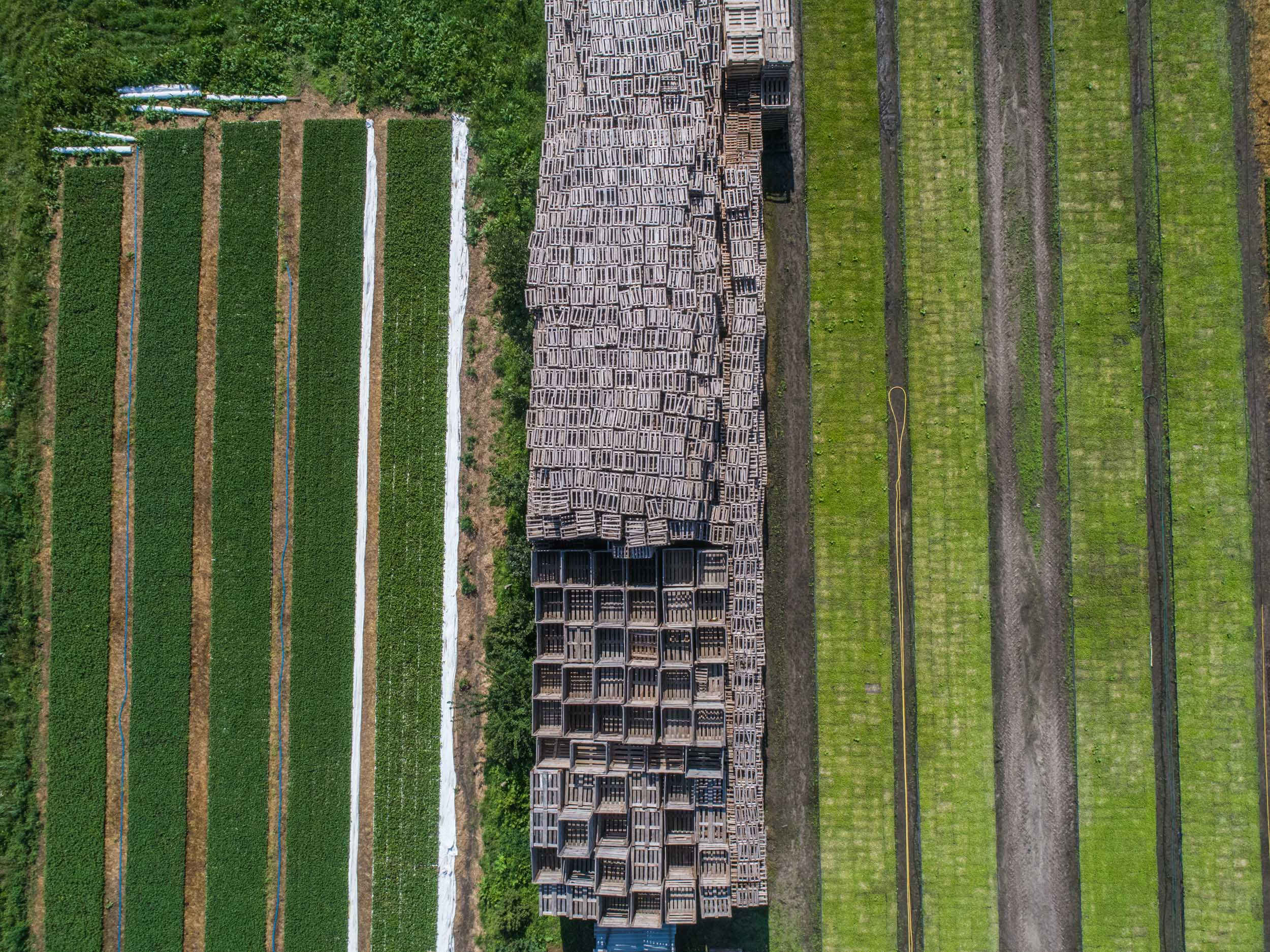
Sales volume and exports
Initially Khorokhoryn’s produce was sold to Lutsk, and then later they began selling to Kyiv. To become profitable the business needs to sell in mass volumes, which is why farmers united their efforts in order to enter a larger market. The head of the village council says:
— When we were on our own we had to look for the markets: out there – Kyiv, Lviv, Lutsk, Rivne, Dubno, around here — the surrounding cities. That was hard. Today buyers look for us as producers. The offers are coming.

Over time the magnitude of the business became so large that Khorokhoryn started exporting Chinese leaf to Belarus and Russia. While Poland remains the main supplier of strawberries within the European market, Poland’s growing domestic demand for frozen strawberries is met by Ukraine. Anatolii insists this is the result of Ukraine’s low wages:
— They (Polish entrepreneurs – ed.) themselves brought us “Zenga Zengana”, a special variety suitable for freezing. They provided the seedlings for free but under one condition – that people would exclusively sell the harvest back to them.
During harvest season the village can sell up to 100 tonnes of strawberries and up to 60 tonnes of Chinese leaf per day. Technically Khorokhoryn’s farmers are not yet a formal cooperative, but they already work and act as if they are. The head of the village council explains that acquiring the legal status of a cooperative would make the farmers more competitive and strengthen their standing within the European market. By uniting and becoming a cooperative the farmers could increase their production volumes and make higher profits:
— And then today you would have a huge refrigerator truck coming to buy 20-30 tonnes of frozen strawberries, not just someone who came for a mere 10kg.

The village in association of territorial communities
Khorokhoryn belongs to Smolygiv association of amalgamated territorial communities (ATC) formed in 2015. Even though Smolygiv is the administrative centre, the majority of budget funds have been directed to peripheral villages from the very beginning. Ihor sees a lot of positives from having the association, although the poor state of the roads is still an issue. He admits that even people from Belarus, who frequently visit Volyn, complain about the condition of the roads. In 2018 there were plans to repair 900 meters of the road but that required around 2M hryvnias (~$74.5k USD – ed.), explains the head of Khorokhoryn’s council:
— Kyiv allocates the money (budgetary funds — ed.) to the region, and then the region divides it among its districts. Districts then allocate the funds between villages. And as an ATC we should receive, I think, up to 1M this year (~$37.2k USD — ed.). So we still have to find about 900k (~$33.4k) of our own funds to fix the 900 meters stretch.

Nevertheless, the improvements in Khorokhoryn, after it became part of an amalgamated territorial community, are obvious: the school’s building was repaired, the library was renovated and the village council is modernising. Now all required administrative services are provided in one place. Before renovation our local village hall was in an appalling state, says Anatolii:
— This corridor was full of water, leaking through the ceiling – because the roof here was flat. The roof was leaking, and here was where the drainage pipes were placed (in the old days pipes were used to drain the water from flat roofs). The pipes rusted through and all the water was coming in. We came here once in winter and it was all like an ice rink — kids could play ice hockey here.
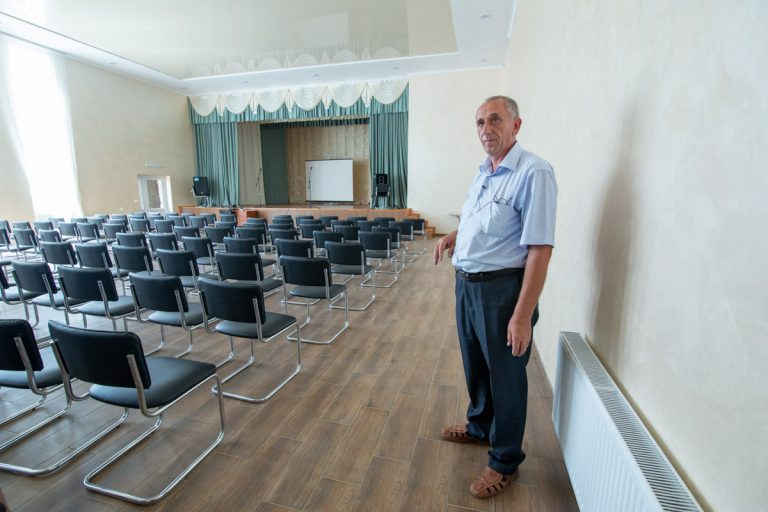
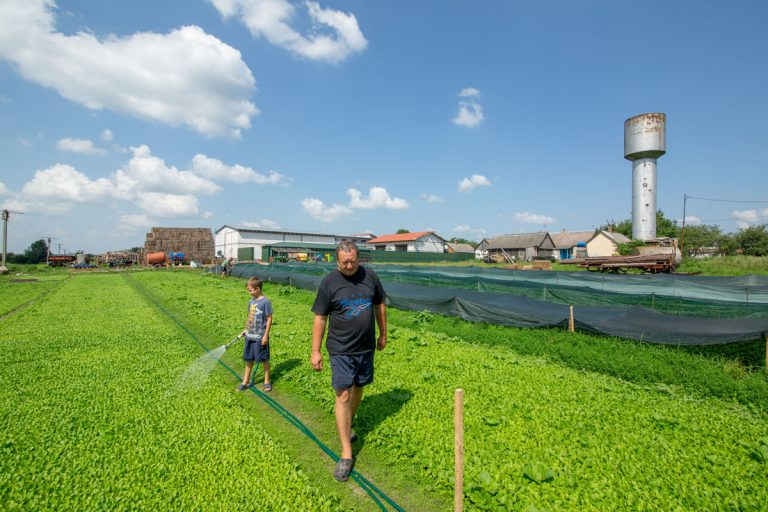
slideshow
The next step will be to build what will be called the logistics centre, a place for individual entrepreneurs to look for new markets, cooperate, exchange expertise, and solve problems together.
By example, Khorokhoryns prove that it is possible to live well, find employment and have a good income, all while remaining at home. And if such an opportunity presents itself, it’s worth pursuing since it’s an investment in one’s own future. In the early stages it’s important to stay patient and work persistently:
— Many people start this business, but very few continue, because it takes a lot of effort. To earn anything you have to work hard for more than two years. Some lads here put in 10 years of their lives, but they are still at a growing stage. Standing still will not bring you forward. You can’t just stop.

